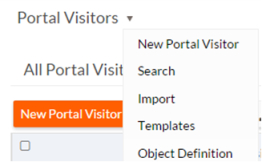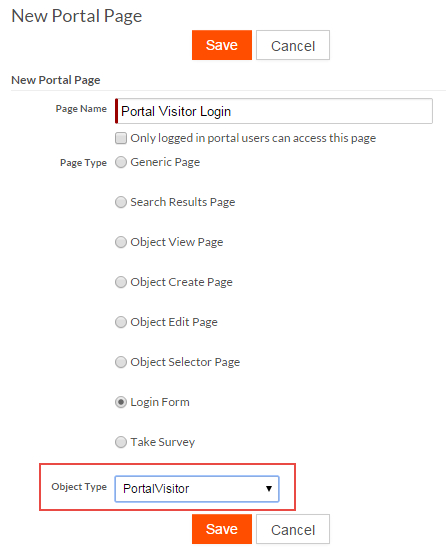Creating a portal user
As described in Portal security, one type of authenticated portal visitor is an account created for an object with the Portal User attribute. Accounts created this way have the Portal User system role. If you want users who do not have Platform user accounts to be able to log in to your portal, you must create an object representing their accounts. This type of portal user can access portals that allow its specific object type to log in, but cannot access Platform applications.
To create a portal user:
- Create a new object definition and a tab for that object in your application, selecting the
Contact attribute from the
Attribute table and the Portal
User attribute from the Advanced
Attribute table. See Creating a new object definition for
details about creating an object definition.
- Edit the object's New page to add the Login Name and Password fields to it. See Editing pages for details about adding fields to a page.
- Edit the object's Edit page to add the Login Name and Password fields to it. See Editing pages for details about adding fields to a page.
-
Launch your application and select New <object> from the object's page menu. In the following graphic, the new object definition is named PortalVisitor:

-
Create records for the new object definition, specifying the Login Name and Password fields. These fields are the credentials for each portal user account. Create a record for each person who will be a portal user.


- An email for a new user creation is triggered only if
loginName,emailhave values along withIsActiveset to true. - During the new user creation, if the value for password field is already present, no email is sent assuming the password for the portal visitor is already been set by the user/administrator.
See Activating Portal User, for more information on activating portal users from the email.

